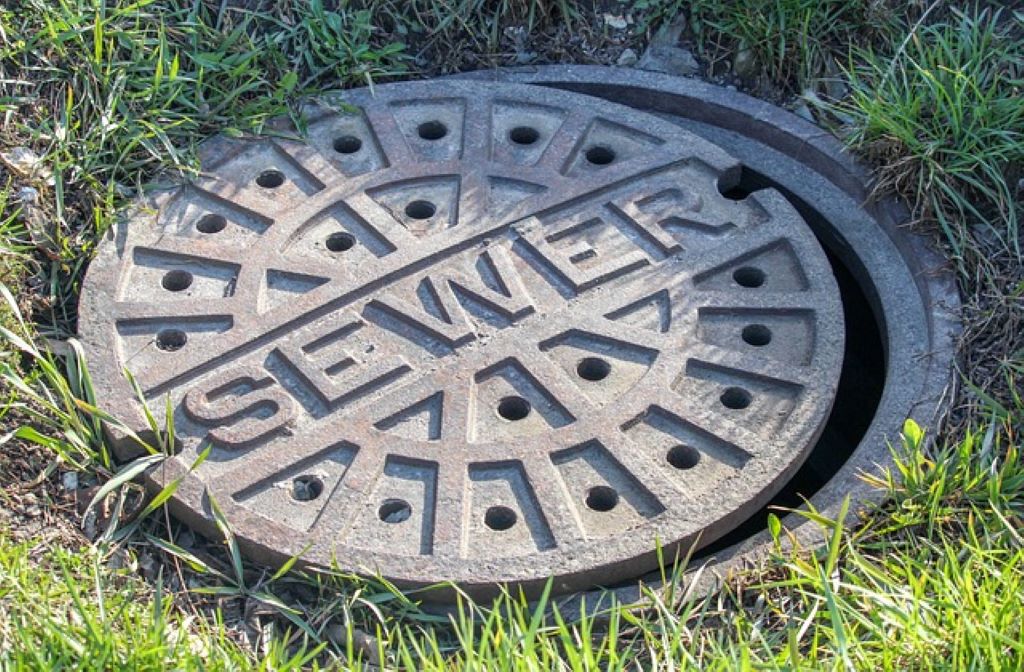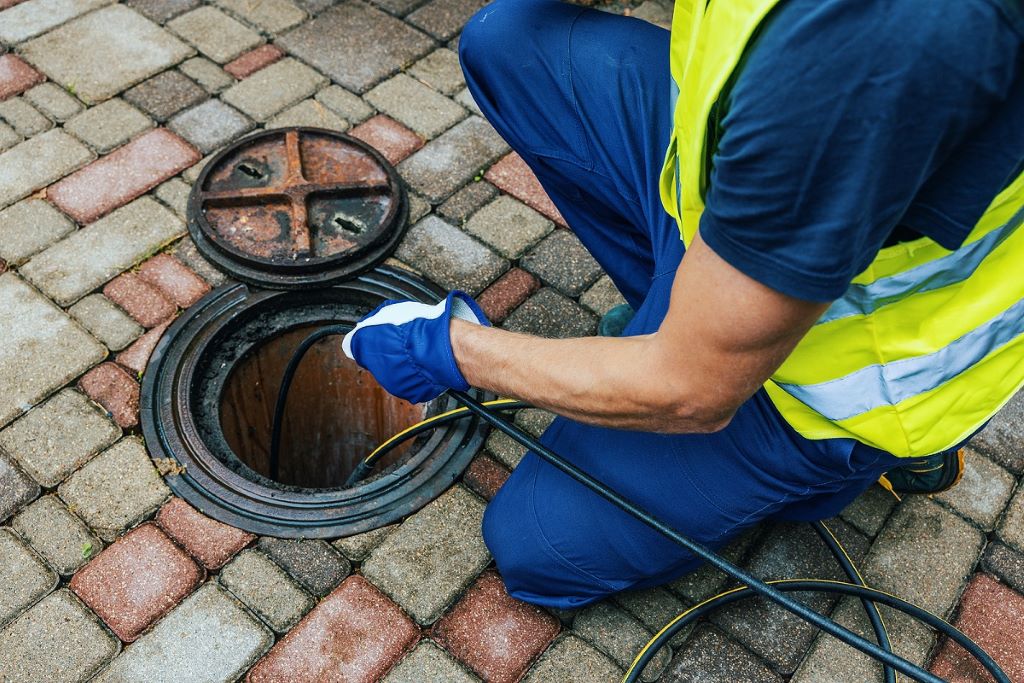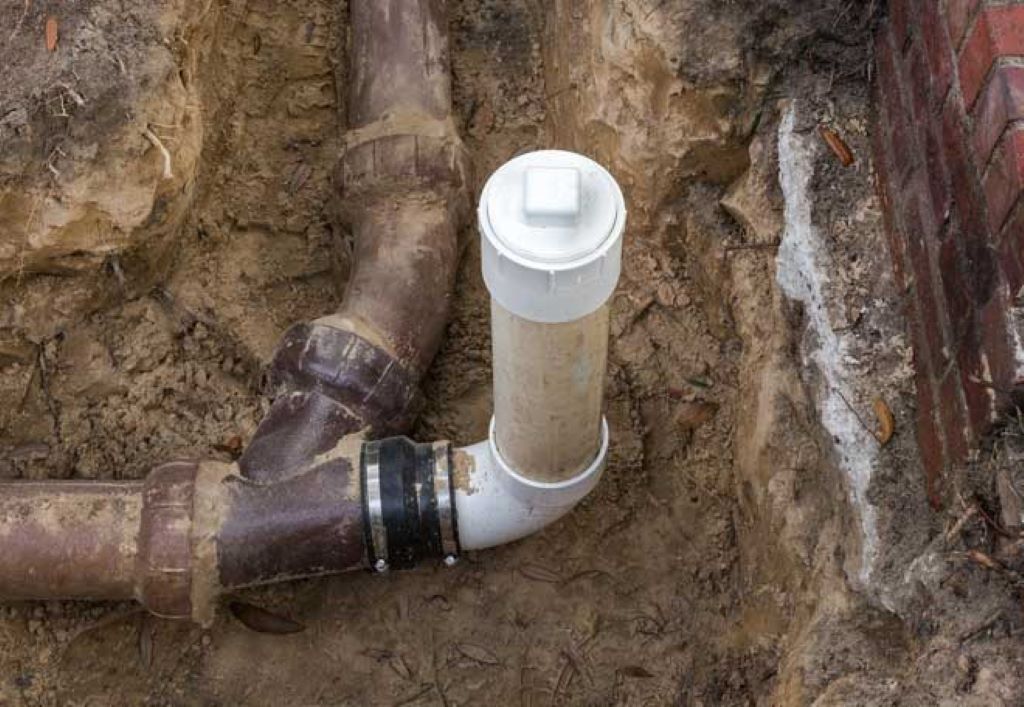
14 Jan What is the Purpose of a Sewer Cleanout?
Having a properly functioning sewer line is something that most homeowners take for granted. We expect that when we flush the toilet or run the sink, the wastewater will conveniently disappear down the drain without a second thought. But like any other utility in your home, your sewer line needs regular maintenance to keep things flowing smoothly. This is where a sewer cleanout comes in handy.
What Is a Sewer Cleanout?
A sewer cleanout is a vertical, round access point that allows you to gain entry into your home’s sewer line. It consists of a removable cap or plugs set into fittings a few inches above the ground. Most cleanouts are made of PVC or ABS plastic. They usually range from 4-6 inches in diameter but can be smaller or larger depending on your home’s plumbing.
Cleanouts are installed outside the home, close to the point where the property’s sewer line connects with the main municipal sewer or septic system. Sewer cleanout in basement provides direct access to the pipes transporting wastewater away from the house. When opened, a sewer cleanout allows for the inspection and maintenance of the underground sewer pipes connected to your property.
Why Are Sewer Cleanouts Important for Your Plumbing?

Sewer cleanouts serve several crucial purposes:
Drain Cleaning and Maintenance
The most common use for a cleanout is to provide easy access to your sewer line when a clog occurs. A drain snake or auger can be fed through the cleanout to break up grease, soap buildup, roots, and other debris causing a blocked pipe. This allows the line to be cleared without having to dig up buried sewer pipes.
Plumbers may also run a camera through the cleanout to inspect the condition of underground pipes and look for any faults, fractures or leaks before they become larger problems.
Locating Pipe Blockages
When you have a sewer backup, cleanouts help diagnose where the blockage is situated along the line. Starting from the cleanout closest to the home, a plumber can work backward along the pipe and determine how far into the sewer the clog is located. This makes clearing blockages faster and easier.
Sewer Line Access
Cleanouts provide direct access to the sewer system so that plumbers can connect pipes and equipment to troubleshoot issues. For example, they may attach hydrojetters or pipe liners through the cleanout to repair broken or damaged pipes.
Venting Sewer Gases
In addition to providing maintenance access, some cleanouts are designed to act as vents. This allows potentially harmful sewer gases like methane and hydrogen sulfide to safely ventilate out of the system rather than back up into the home’s living spaces.
Where Are Sewer Cleanouts Located?
Most homes have at least one main sewer cleanout installed outside. The exact placement can vary, but they are usually found:
- Near the foundation where the home’s main sewer line exits the house
- In the front yard near the street
- In the backyard near other utility hookups
- Off the side yard, driveway, or alleyway
- Near septic tanks or lateral drain fields
Ideally, a cleanout should be placed every 50 feet or so along the sewer line’s run from the house to the street. Longer runs and bends may require additional cleanouts so that no spot along the underground pipe is more than 100 feet from an access point.
Cleanouts installed on upper floors or basements inside the home are less common but can provide access to clogged sinks, tubs, showers, and other fixtures that drain through overhead sewer pipes.
How to Identify a Sewer Cleanout
Locating your sewer line cleanout is the first step in maintaining your drainage system. Here’s what to look for:
- Round plastic cap – Cleanouts have removable round caps made of PVC or ABS. They are usually white, black, or gray and about 4-6 inches in diameter. The cap may be threaded or can be pried off with a screwdriver.
- “Sewer Cleanout” text – Many cleanout caps are stamped with the words “sewer cleanout” or “S/C”. This text indicates the purpose of the access point.
- Riser pipe – A short pipe called a riser will extend vertically from the sewer line up to the cleanout cap. This brings the access point flush or slightly above ground level.
- Near exterior faucet – Outdoor faucets for hose bibs are often located close to cleanouts to provide water access for drain cleaning.
- Offshoot from main sewer line – Trace the direction of your main sewer line exiting the house, usually downhill towards the street. Look for a cleanout along this path or at a 45-90-degree angle off the main line.
- Check with neighbors – Their cleanouts may be in similar locations to yours if your homes share a common sewer line.
Why Proper Cleanout Installation Is Important
Cleanouts play an essential role in maintaining your underground sewage pipes. But to serve their purpose, they need to be installed correctly:
- Place cleanouts on straight sections of pipe. Cleanouts should be positioned on long, straight runs of sewer line, not right against turns or elbow joints. This allows the equipment to feed through smoothly.
- Keep risers short. Cleanout risers that extend too far above ground are prone to damage from frost, vehicles, lawn equipment and other hazards. Keep risers only 2-6 inches above grade.
- Glue fittings. All joints must be properly cemented to prevent leaks of sewer gases or wastewater.
- Remove debris. Make sure the cleanout opening and sewer pipe are clear of concrete, rocks, dirt or other debris from construction.
- Test for leaks. Plumbing code requires cleanouts to be water-tight. After installation, plug the opening and fill the riser with water to check for any drips or seepage. Fix leaks before covering.
- Allow easy access. Do not bury cleanouts or surround them with plants, mulch, decks, or other obstructions limiting access.
Following professional code standards for positioning and sealing cleanouts will ensure they operate safely and make sewer maintenance a breeze.
How to Use a Sewer Cleanout
When faced with a stubborn clog or sewer backup, you’ll be glad you have easy access via a cleanout. Here is a simple step-by-step process:
- Locate the cleanout – Find the appropriate cleanout cap closest to the affected drain line.
- Clear debris – Remove any surface dirt, leaves, mulch or other material from the cap and surrounding riser.
- Loosen the cap – Insert a flathead screwdriver into the slots around the cap and gently pry it up, breaking the seal. Unscrew threaded caps by hand.
- Feed the drain snake – Insert the end of your powered auger or hand snake into the cleanout opening and feed it through the pipes.
- Clear the clog – Once you hit an obstruction, work the cable back and forth to break up the blockage. Retrieve any debris pulled back by the snake.
- Run water – After removing the snake, run water through the drain and flush debris down the line. Test that the drain is cleared.
- Replace the cap – Securely re-seat the cleanout cap, screwing it in tightly or tamping it flush with the riser. This prevents sewer gases from escaping.
- Check upstream – If water still won’t drain smoothly, the clog may be further along the sewer line past the cleanout’s reach. Try the next access point upstream.
With a few simple tools and steps, a handy homeowner can tackle many basic sewer clogs through their cleanouts. But if you can’t seem to clear the line fully, call a professional plumber for assistance.
Sewer Cleanout Maintenance Tips
Like any plumbing fixture, cleanouts need periodic maintenance to keep them functioning properly:
- Inspect cleanout caps yearly for cracks, leaks, or loose fit. Replace damaged caps immediately to contain sewer gases.
- Clear any debris, mulch, or soil buildup around the cleanout riser using a shovel or trowel. Keep access unobstructed.
- Lubricate threaded cleanout caps periodically with penetrating oil or grease. This prevents seizing and allows easier future removal.
- Confirm that cleanout caps are securely hand-tight but not over-torqued. They mainly need to seal out gases, not withstand pressure.
- If the cleanout riser pipe shows signs of damage or leaks, it may need replacement by a plumber.
- Test cleanout access when moving into a new home. Verify you can easily locate and open them.
- Keep a sewer snake, gloves, bucket, and cleaning supplies handy for when sewer backups inevitably occur.
With regular care and maintenance, your cleanouts should provide reliable access for many years. Call a professional if large-scale sewer repairs are needed.
When to Call for Professional Help
While a properly used sewer cleanout is invaluable for minor DIY drain cleaning, there are times to call in a pro:
- If you can’t clear a clog through the cleanout using a standard snake or auger.
- For chronic sewer backups or drain problems recurring despite cleanouts.
- If you suspect collapsed, damaged, or misaligned pipes are causing poor drainage.
- For video camera pipe inspections requiring specialized sewer equipment.
- To hydrojet or power wash persistent grease or soap buildup.
- If tree root growth needs to be trimmed back from infiltrating the line.
- When sewer gases frequently vent into the home, indicating leaks.
- For major repairs like pipe bursting, relining, or full sewer line replacement.
- If the cleanout riser, cap, or fittings themselves are damaged or need replacement.
Avoid amateur sewer repairs beyond cleanout access. Sewer gases contain toxic fumes and wastewater exposure risks serious infections. Trust qualified plumbers for large-scale sewer maintenance.

Sewer Cleanout Codes and Requirements
Most areas regulate sewer cleanout provisions through plumbing codes and municipal ordinances. Common sewer cleanout requirements include:
- Cleanouts every 100 feet – Sewer lines should have a cleanout at least every 100 feet or so, at turns, and when lines converge.
- Main house trap cleanout – A cleanout should be positioned downstream from the main sewer trap exiting the home.
- 4-6 inch openings – Cleanout access has to be large enough to allow drain snakes and equipment through. 4-6 inches is standard.
- Venting cleanouts on main runs – Key cleanouts along a sewer’s main line must allow ventilation of sewer gases up through the roof.
- Water-tight construction – Cleanout riser pipes and caps must be glued or screwed together to prevent leaks around fittings.
- Flush with grade – Cleanouts cannot have sunken caps or protrude excessively above ground level, which could lead to damage.
- Maximum depth – Some codes limit how deep cleanouts can be buried. Check local standards.
- Licensed plumbers – In many areas, only qualified professionals can legally install or replace sewer cleanouts.
Always consult local ordinances for requirements before installing or modifying sewer cleanouts. Permitting may be needed for adding cleanouts to existing lines.
Sewer Cleanout Installation Cost
If your home is lacking cleanouts, how much can you expect to spend having them added? Typical sewer cleanout installation costs:
- Cleanout parts – $10 – $30 for basic PVC fittings, cap, riser and glue. More for higher-end brass or coated hardware.
- Labor – $50 – $150/hour for excavation, installation, testing, Permitting and plumber fees. Often billed in minimum increments.
- Additional access – $300 – $1,000+ to add multiple cleanouts along a long sewer line lacking access.
- Sewer location – $200 – $500 to locate underground pipes if unknown. Needed to place cleanouts properly.
- Permit fees – $25 – $150+ depending on the municipality.
- Road access – $100+ per day for permits to dig in public right-of-ways.
For a single cleanout near the home, expect at least $300 – $500 on average. Difficult installations or adding several cleanouts down a long pipe run can cost $1,500 – $3,000. Always obtain quotes from qualified, licensed plumbers in your area.
FAQs
Do all homes have a sewer cleanout?
Most modern homes have at least one main sewer cleanout, usually installed near the foundation where interior drains exit the house. Older homes often lack exterior cleanout access, making sewer maintenance a challenge.
Where should cleanouts be located?
Ideally, cleanouts are positioned every 50 feet along a sewer line, at major junctions and bends, upstream of the main sewer trap, and near areas prone to clogs like the kitchen.
Can I use a sewer cleanout to unclog basement drains?
No. A main sewer cleanout only accesses pipes carrying waste outdoors away from the house. To clear basement fixture drains, you need interior access points.
Do I need a professional to open and use a cleanout?
Homeowners can safely open and snake their own sewer cleanouts to clear basic clogs. But hire a plumber for chronic backups, electrical augering, video inspection, major repairs, or complicated locations.
How often should sewer cleanouts be maintained?
Cleanouts should be visually inspected yearly and kept accessible. Lubricate threads on caps every 2-3 years and replace damaged caps promptly. Have a plumber assess buried lines every 5 years.
Conclusion
Humble-looking sewer cleanouts provide crucial access for maintaining your underground drainage system. When positioned properly, cleanouts enable swift clearing of basic clogs without costly excavation. They also assist plumbers in diagnosing and repairing buried sewer lines. How do you clear a sluggish toilet? Keeping cleanouts well-maintained grants peace of mind against backups and ensures smooth sewage removal for years to come. Take steps to locate your existing cleanouts and have new access points added if needed, addressing any plumbing issues promptly and efficiently.
